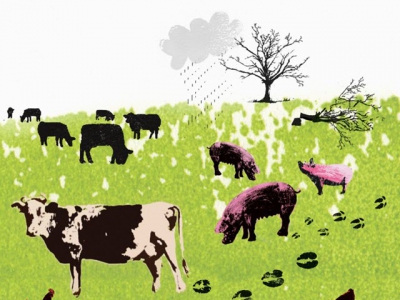Environment
Making the most of calcium as a soil and plant nutrient
Despite being a vitally important element for optimal crop production, calcium is often largely undervalued by farmers and agronomists.
- Stocking rate effects on growing juvenile sunshine bass
- Energy efficiency in pumping systems on aquaculture farms
- Model tilapia venture shows mettle in Mozambique
- Advances in super-intensive, zero-exchange shrimp raceways
- Recovering nutrients from seafood processing water
- Production of Pacific white shrimp in sandy soils in Indonesia
- Nitrogen, phosphorus, eutrophication and effluent standards for aquaculture certification
- Report calls for changes to Scottish salmon sector
Environment

Water temperature in aquaculture
The temperature of water is an important variable in aquaculture, but in most types of aquaculture it cannot be controlled and depends upon the amount of solar

Ammonia nitrogen dynamics in aquaculture
Ammonia nitrogen consists of ammonia (NH3) and ammonium (NH4+), but methods of measuring ammonia nitrogen concentration do not distinguish between the two forms

In South Africa, abalone farming goes for gold
Stories about abalone in South Africa frequently make the press, but it is not usually good news when it does.

Global shrimp production review and forecast: Steady growth ahead
Globally, production of farmed shrimp is expected to increase at a 5.7 percent compound annual growth rate (CAGR) from 2017 to 2020.

Shrimp farming in Guatemala has gone intensive
The shrimp farming industry in Guatemala has embraced an intensive production model similar to the one developed in several Asian countries, with smaller

Treatment of shrimp hatchery effluents
Sedimentation and biofiltration simple but effective technologies that should be widely adopted by industry

New tech trialled for water quality monitoring
A project to test cutting-edge techniques that could help to protect the aquaculture industry from the impact of harmful algal blooms (HABs) and water quality

Constantly changing pH unavoidable, completely normal
Aquaculture ponds should have waters with pH above 6.5 and sufficient alkalinity either naturally or because of liming.

Effects of mechanical aeration on evaporation rate, water temperature
Restricting use to periods when oxygen supplementation is needed can conserve water, lessen energy use. Effects of mechanical aeration on evaporation rate

Estimating global shrimp pond area
Land use is an important indicator of the environment impact of an activity, and better data on the shrimp pond area and the areas devoted to other types

Revisiting ionic imbalance in low-salinity shrimp aquaculture
Determining amounts of major cations needed to counteract ionic imbalance challenging. Revisiting ionic imbalance in low-salinity shrimp aquaculture

Weeds present a greater challenge to feed crop production than expected
The production of soybeans see more yield damage from the emergence of common ragweed than expected, however two-pass mitigation systems may provide
